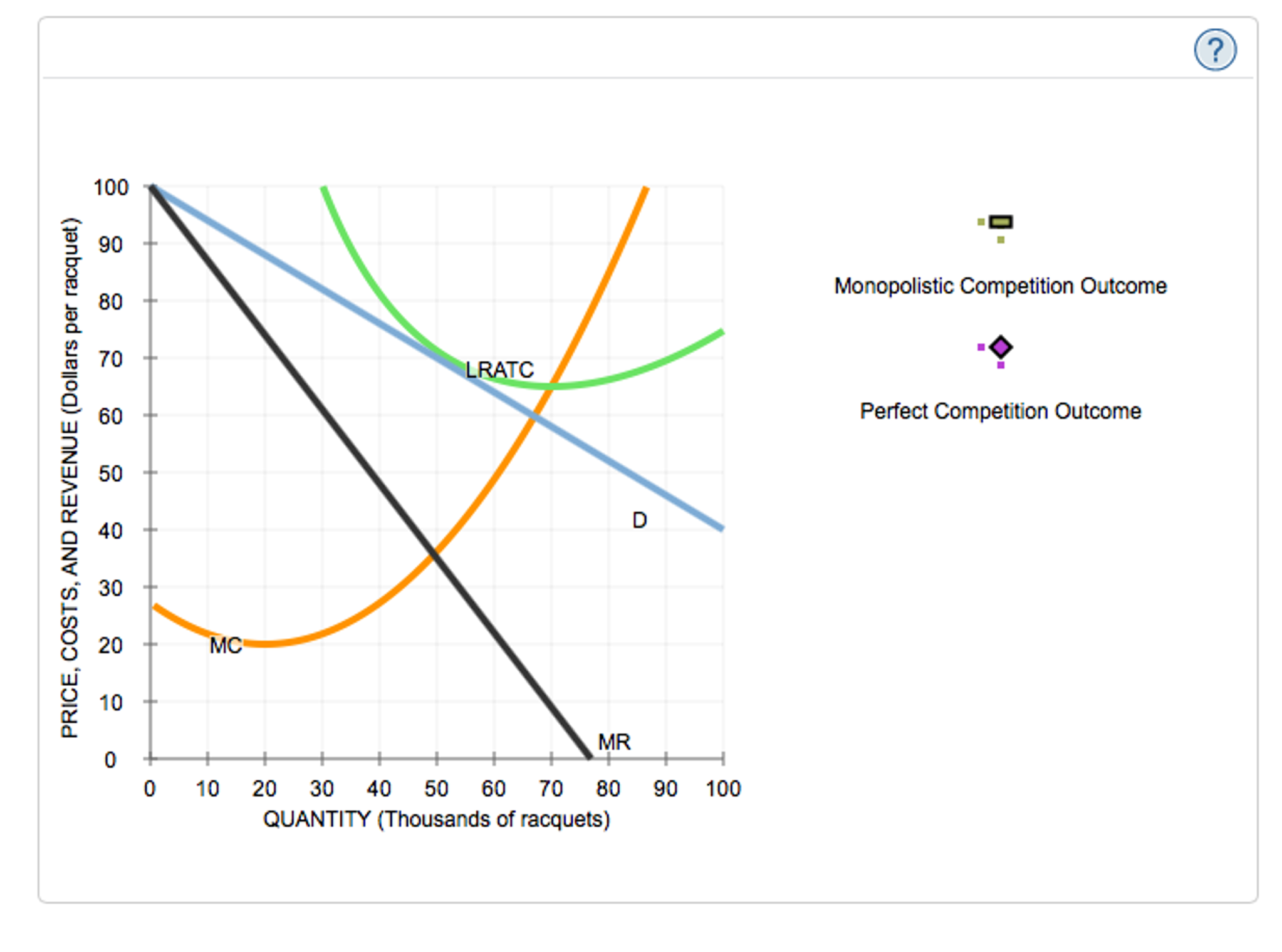
.png)
At the new equilibrium quantity (P 1, Q 1), the original firm is earning zero economic profits, and entry into the industry ceases. Positive economic profits attract competing firms to the industry, driving the original firm’s demand down to D 1. This is clear because if you follow the dotted line above Q 0, you can see that price is above average cost. (a) At P 0 and Q 0, the monopolistically competitive firm in this figure is making a positive economic profit. Monopolistic Competition, Entry, and Exit. The shift in marginal revenue will change the profit-maximizing quantity that the firm chooses to produce, since marginal revenue will then equal marginal cost at a lower quantity.įigure 1. As a firm’s perceived demand curve shifts to the left, its marginal revenue curve will shift to the left, too. As more firms enter the market, the quantity demanded at a given price for any particular firm will decline, and the firm’s perceived demand curve will shift to the left. The entry of other firms into the same general market (like gas, restaurants, or detergent) shifts the demand curve faced by a monopolistically competitive firm. A laundry detergent with a great reputation for quality must be concerned that other competitors may seek to build their own reputations. A successful restaurant with a unique barbecue sauce must be concerned that other restaurants will try to copy the sauce or offer their own unique recipes. A gas station with a great location must worry that other gas stations might open across the street or down the road-and perhaps the new gas stations will sell coffee or have a carwash or some other attraction to lure customers.

Explain how short run and long run equilibrium affect entry and exit in a monopolistically competitive industryĪ monopolistic competitor, like firms in other market structures, may earn profits in the short run, but that doesn’t mean they’ll be able to keep them. If one monopolistic competitor earns positive economic profits, other firms will be tempted to enter the market.


 0 kommentar(er)
0 kommentar(er)
